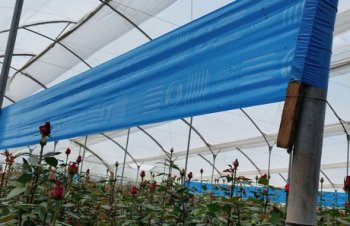
The patterned sticky roll was developed by the company after noticing that insects trapped on their original non-patterned Optiroll were found most commonly at the edge, as they were attracted to the contrasting colours of the border.
The Russell IPM team began researching insect catch rate for different designs and after multiple trials the most attractive pattern was identified. Following this, testing in various agricultural and horticultural crop farms began across the globe in South America, Africa and the UK to measure the effectiveness of the trap against different pest species.
Most recently, results have been gathered on the effectiveness of Optiroll Super at protecting Carnation and Rose flowers in Ecuador. Mr Galo Pita V, who has been conducting the trials, has found ‘some extremely positive results, with Optiroll Super capturing 450% more thrips than the control. Additionally, the protection was seen to increase substantially as infestation levels increased.’
Furthermore, a second trial in Ecuador measured the capture rate of the trap in flowers of Alpine Delphinium, Green Wicky Sweet William, Statice and Sea Holly growing greenhouses, whereby Optiroll Super was found to significantly suppress insect populations when compared to a conventional chemical application. Mr Pita V. stated that ‘the traps act as a barriers to the relocation of the thrips, to reduce the opportunity for migration and mating which ultimately reduces the population and spread of the fly and of course this works to protect the flowers from damage.’
In favourable conditions such as those within greenhouses, where environmental factors are carefully controlled, the traps can last up to twelve weeks.
In outdoor farms, the traps were found to last between 8-12 weeks, which in combination with a high catch rate makes Optiroll Super a highly competitive solution.
Russell IPM stated that as this trial was conducted in a highly temperate region where thrips are more active and more likely to leave the host to find further food sources, the company added it looks forward to undertaking additional testing for blue Optiroll Super in cooler climes to see if the success is mirrored or if it is environment dependent.
Finally, Optiroll Super is said to be a safe and non-toxic solution to the management of thrip pests. Installation of the sticky roll should reduce the necessity of pesticide spraying and subsequent negative effects to natural enemies providing a safe and sustainable solution to thrip management.
More information, visit: www.russellipm.com



 Classifieds
Classifieds

